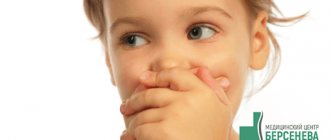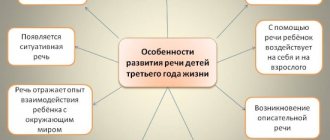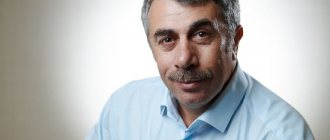Forms of motor alalia in children
Depending on the location of the brain damage, the following types of motor alalia are distinguished: afferent and efferent.
Afferent (kinesthetic)
This form is caused by damage to the area of the cortex that is responsible for the kinesthetic control of the speech program. It is located in the inferior parietal region of the left hemisphere. At the same time, it is difficult for the child to reproduce words and sentences and find articulatory poses. That is, the baby does not know how to position his tongue, lips, teeth when pronouncing a word.
The condition is called oral-articulatory apraxia. Outwardly, it manifests itself by replacing sounds and distorting the structure of syllables.
Efferent (kinetic)
Efferent motor alalia develops due to damage to Broca's center - the posterior frontal areas of the brain. This zone is responsible for controlling the switching of articulatory acts. Children with this pathology find it difficult to follow the sequence of speech movements. As a result, the syllabic composition of the word is distorted, and speech slows down. In science, this syndrome is called kinetic apraxia.
There are also levels of motor alalia. This classification takes into account the degree of speech underdevelopment. At level 1, the baby is extremely limited, uses a few everyday words, and the basis of speech is onomatopoeia and babble. Level 2 is characterized by a wider range of words and the ability to compose short sentences. Level 3 of motor alalia is distinguished by the presence of phrasal speech.
Causes of motor alalia in a child
The development of motor alalia occurs due to damage to the motor centers of speech in the brain.
Depending on the time of exposure to the traumatic factor, there are:
- Prenatal factors are those that affect the fetus. This group includes infectious diseases of women during pregnancy (rubella, cytomegalovirus infection, toxoplasmosis are especially dangerous), diabetes mellitus, toxicosis, incompatibility of the fetus and mother according to the Rh factor, hypoxia. Brain damage can also be caused by severe stress, physical trauma of a woman, taking medications that are contraindicated during this period, taking alcohol and drugs, smoking;
- Intranatal factors are those that act during childbirth. These include birth injuries to the brain and asphyxia. These factors lead to the death of neurons. Stimulation of labor, rapid labor, the use of obstetric forceps, premature rupture of water, premature placental abruption, and entanglement of the umbilical cord have a negative impact;
- Early postnatal factors. This group includes traumatic brain injuries, meningitis, encephalitis, and brain tumors that occurred in the first year of a child’s life. Infectious diseases, anemia, rickets, and malnutrition can also have an effect. A special role is played by a lack of communication, attention from parents, and emotional upheavals at an early age (separation from mother, for example).
A characteristic feature: the earlier and longer the negative factor was exposed, the more pronounced the motor alalia, the more serious the consequences and the more complex the prognosis.
Conclusions. Expert advice
Children with motor alalia have a chance for a normal life if their parents did not let everything take its course. The disease can be identified at the age of 3 years, when the problem is completely correctable. First of all, it is necessary to make a diagnosis and confirm it with several doctors. So, an audiologist should give his opinion, because alalia is in many ways similar to ordinary deafness.
Treatment of the disease must be comprehensive. During diagnosis, its cause is determined and a course is prescribed. Afterwards, the child must be given medications, attend a physiotherapy room, classes on general manual motor skills, etc. Stimulating speech activity with a speech therapist plays a significant role.
Remember that the prognosis for alalia, although it depends on the degree of brain damage, is determined by proper treatment. Timely identification of the problem and the use of all available methods of therapy can often completely eliminate motor alalia and significantly reduce the impact of sensory alalia on the child’s life.
Signs of motor alalia in children
Symptoms vary in severity: from minor difficulties that practically do not interfere with normal life, to a complete absence of spoken language. Both the phonetic-phonemic and lexical-grammatical components suffer.
At an early age, the pathology is characterized by poor speech reactions. A 2-year-old child may have no babbling at all. Children actively use gestures, onomatopoeia, and primitive babble to communicate.
A child only develops his first words at the age of 3 or a little later. And at the same time he confuses sounds, replaces them, skips them. Can repeat syllables or individual sounds, connect inappropriate syllables from different words.
A 4-year-old child has a poor vocabulary, the phrases are incomprehensible and incorrectly composed. And in the future, he mainly uses nouns, ignores conjunctions, prepositions, and very rarely uses adjectives, verbs, adverbs, and function words. Words do not agree in cases, numbers, genders and tenses. He divides words when speaking and speaks slowly.
A baby cannot repeat sounds after an adult, not to mention phrases. He cannot relate the word and the situation, so he uses words incorrectly.
At the same time, the child understands the addressed speech: he can fulfill the request or respond with a gesture.
Symptoms of psychological and neurological disorders are also observed. Such children, as a rule, are not very active. They are calm about their condition. In general, they are clumsy and have poor coordination and fine motor skills. For example, it is difficult for them to thread a needle, pick up a small object and transfer it.
Attention, memory, and thinking suffer. Children have an unstable emotional background, they are whiny, which makes communication with others even more difficult. There may be sleep and appetite disturbances.
Currently, there has been significant progress in the development of speech therapy. Based on psychological analysis, important data were obtained on the mechanisms of the most complex forms of speech pathology (aphasia, alalia, general speech underdevelopment, dysarthria). Alalia is one of the severe and persistent forms of speech pathology. Many children with alalia do not acquire language and remain non-speaking or barely speaking even after entering school.
Thus, the problem of diagnosing and organizing correctional and educational work for alalia is one of the most important and fundamental scientific and pedagogical problems of the system of preschool and school educational institutions at the present time.
ALALIA is one of the most severe speech defects, in which the child is practically deprived of linguistic means of communication: his speech is not formed independently and without speech therapy assistance.
Alalia is the absence of speech or systemic underdevelopment of speech due to organic damage to the speech areas of the cerebral cortex in the prenatal or early period of a child’s development (before speech formation)
Alalik children represent a pedagogically heterogeneous group and differ in the severity of the defect and the productivity of correctional work.
Alalia is observed in children with intact peripheral hearing and articulation apparatus, who have sufficient intellectual capabilities for speech development.
Lack of speech sharply limits the child’s full development and communication with others. And this, in turn, leads to a gradual lag in mental development, which in this case is of a secondary nature.
With alalia, speech may be completely absent - the child is simply silent, or he utters individual inarticulate words that are incomprehensible to others.
Let's briefly look at how speech is formed normally:
— The first words appear about a year ago.
By the age of two, children should be able to communicate in short, simple sentences. These sentences, of course, are still very imperfect; there may be omissions of words that the child does not yet know. Many words are pronounced distorted and sound very funny. At this age, children master the sound composition of words and learn to formulate their statements grammatically correctly.
— At three years old, a child should speak quite competently, in full sentences, almost like an adult. The only difference is that his speech will express his still limited life experience. Incorrect pronunciation of individual sounds at this age is natural and is not considered a deviation from the norm.
The causes of speech formation disorders are associated with organic lesions of the central nervous system. These include:
- inflammatory, traumatic brain lesions
- birth injuries
- asphyxia
- intrauterine encephalitis, meningitis
- cerebral hemorrhages due to difficult and rapid labor
- unfavorable development conditions
- fetal intoxication
- congenital burden.
In addition, the occurrence of alalia is possible in children who have suffered severe rickets, complex diseases of the respiratory system, who had sleep and nutritional disorders in the early months of life.
Depending on the predominant localization of damage to the speech areas of the cerebral hemispheres (Broca's center and Wernicke's center), two forms of alalia are distinguished: motor and sensory, and recently the sensorimotor form of alalia has very often occurred.
Motor alalia
Motor alalia is a systemic underdevelopment of expressive speech (active oral utterance) of a central organic nature, caused by damage to the speech areas of the cerebral cortex in the prenatal or early period of speech development. This violation is due to the immaturity of linguistic operations in the process of generating speech utterances with the relative preservation of semantic and sensorimotor operations.
Motor alalia - the child understands speech addressed to him, but does not know how to reproduce it. (Parents say about such children: “He understands everything, but cannot say it.” ).
Sensory alalia
Sensory alalia is a systemic underdevelopment of speech that occurs with organic damage to the speech zones of the CGM (temporal region of the dominant hemisphere) and is caused by the immaturity of the operations of the process of perceiving addressed speech with the relative preservation of physical hearing and motor capabilities.
Sensory alalia - a child does not understand speech addressed to him (impaired perception and understanding of someone else's speech). Such children exhibit echolalia - automatic repetition of other people's words. Instead of answering the question, the child repeats the question itself.
Symptoms of motor alalia
Speech symptoms:
Children suffering from this form of alalia have sufficient pronunciation capabilities, but they are not able to use them. The disorders are phonemic in nature; the operation of selecting a sound to form a speech utterance is impaired. In the speech of motor alalitics, literal paraphasia (replacement of a sound in a word with another), perseveration (obsessive reproduction of sounds or words), and elision (loss of sounds) abound.
There are also violations of the semantic aspect of speech. These children have significantly more words in their passive vocabulary than they use in active speech. There is a predominance of subject vocabulary, while the verb vocabulary is sharply limited, both the understanding of verbs and the use in speech.
Children replace some words with others that are close in meaning and included in the same associative field with them, for example, instead of the word table they say chair, etc. Contamination can be observed in speech when a child in speech combines syllables belonging to different words into one for example, the word “trashet” means the tractor is plowing.
Violation of the grammatical structure of speech is manifested in incorrect agreement of words in number, gender, case, and tense. Children omit prepositions in their speech. Most motor speakers understand spoken speech at the nominative level (they mostly know the names of objects).
Non-speech symptoms:
Severe neurological disorders are observed:
- Oral apraxia (motor disturbances of purposeful movements and actions of the facial muscles with a disorder of complex movements of the lips and tongue).
- General motor clumsiness; children with motor alalia have impaired balance.
- Impaired fine motor skills.
- Signs of minimal brain dysfunction.
- pronounced vegetative-vascular changes.
Psychopathological symptoms:
- Speech negativism (reluctance to speak) is very characteristic.
- The mental development of children lags behind the norm to varying degrees.
- Higher mental functions (memory,
attention, thinking, etc.).
- Local lesions of the cerebral cortex also affect nearby
speech zones.
- It is difficult to program one’s actions; there is a decrease in
arbitrariness of actions.
- Children can be inhibited, but more often they are disinhibited and impulsive.
- They adapt poorly to the conditions that surround them.
- There is a pronounced lack of formation of game actions.
- Children are touchy, withdrawn and often aggressive.
A child cannot learn to speak due to poor control of his speech organs (tongue, lips, lower jaw).
At the same time, his muscles are absolutely healthy, he simply cannot act with them at his own discretion (voluntarily). Moreover, he fails, or only poorly succeeds in speech movements (he cannot pronounce speech sounds, and therefore words), but non-speech movements are in perfect order (he opens his mouth while eating, chews, licks, smiles, etc. .).
Speech understanding is intact in this form of alalia.
Symptoms of sensory alalia
Speech symptoms: the primary violation in the structure of the defect is a violation of phonemic perception of varying degrees: from complete insensitivity to speech sounds to difficulty distinguishing words that sound similar in sound. Passive vocabulary is practically absent. In everyday situations, the child is more likely to focus on intonation, sequence of actions, etc., but not on words. Impressive agrammatism blocks the formation of one's own speech. Logorrhea and echolalia are noted.
Non-speech symptoms. Neurological disorders: sensory-acoustic syndrome (flickering inconstancy of auditory function), auditory agnosia, hyperacusis, specific behavioral and movement disorders.
Psychopathological disorders: the cognitive sphere suffers to a greater extent than with motor alalia. Nonverbal processes develop only through visual processes and display. Severe developmental retardation is often noted. Behavior is chaotic, chaotic, impulsive. A child cannot learn to speak because he does not distinguish between the sounds of speech; it is as if he “does not hear” . At the same time, he hears any other “non-speech” sounds very well and reacts to them.
Such a child usually lacks his own speech completely, or there may be individual babbling words, or there may be echolalia (when he repeats a word he has just heard, if he is able to remember it for a short period).
Since the child does not perceive the sounds of speech, he does not understand the speech of others.
Motor alalia can be expressed to varying degrees depending on the severity of the neurological disorder, the conditions of upbringing and speech environment, the time and duration of speech therapy, and also largely depends on the compensatory capabilities of the child: mental activity, state of intelligence and emotional-volitional sphere.
- degree The child is not able to make any voluntary movements with the organs of speech, even just to open his mouth upon instructions. However, the same involuntary actions are not affected (that is, he opens and closes his mouth perfectly while eating). With such severity of the disorder, the child, as a rule, does not speak at all or makes inarticulate sounds.
- degree The child is able to make simple voluntary movements with the speech organs (copy them). In this case, he may develop some speech. He can very imperfectly pronounce a limited number of words consisting of individual syllables and sound combinations. The same word can be pronounced differently each time, since he does not remember the speech movements that comprise it.
To understand whether a child has motor alalia, you need to determine how well he controls his speech organs. Check if he can imitate (follow you in your demonstration) certain movements with the speech organs: open and close his mouth, stick his tongue out of his mouth and put it back, smile and stretch his lips into a tube, raise his tongue up to his teeth and lower it down. Movement is needed
perform while looking in the mirror. If the child cannot cope with these actions, check whether he is generally able to perform at least some movements with his speech organs according to the instructions. For example: ask him to open his mouth, show this action several times, tell him to imagine how he eats, bring a spoon to his mouth. Or: smile, pretend to laugh, invite your child to laugh together.
Sensory alalia can be expressed to varying degrees.
1st degree
The child may not perceive speech sounds completely - may not pay attention to them. Then he does not react at all to speech and gives the impression of being deaf and mute.
2nd degree
The child may have no reaction to the human voice at all. He does not hear or distinguish people's voices.
3rd degree
A child can perceive some speech sounds and their combinations, but it is very difficult to distinguish between them. Then he responds to verbal appeals, but still does not understand their meaning or understands it very distantly.
Basically, he orients himself based on the situation, reacting to the gestures of the people around him, facial expressions, turns of the head, and roughly guesses what is being said and what is happening. In this case, parents may consider that the child has a completely satisfactory understanding of speech.
To determine if a child has sensory alalia, you need to check if he understands simple instructions and the meaning of words. Invite him to perform well-known actions (approach something, bring something, etc.). Ask to show this or that thing (window, table), to make this or that movement (sit down, lie down, walk). All instructions must be in exclusively verbal form, completely avoid any kind of gestures: pointing gestures, turning the head, looking at the object. Also check how your child reacts to speech sounds and human voices. Call him behind his back (hey, ow), pronounce vowels and consonants and see if they attract his attention. A child who cannot understand speech must have his physical hearing tested.
Sensorimotor alalia
This speech disorder is a combination of the auditory and motor disorders described above, expressed to varying degrees, and is therefore the most severe speech defect.
In this condition, the child does not understand foreign speech, does not have the ability to recognize it, and cannot speak. Sensorimotor alalia occurs in approximately 3.7% of all cases of the disease.
Treatment of alalia in children
Treatment of alalia in children is carried out under the supervision of a pediatric neurologist and psychiatrist. Regular sessions with speech therapists play a huge role. Parents should treat such a child with care and understanding. However, there is a fine line beyond which lies the recognition of the child’s inferiority. Treat him like an ordinary baby, but at the same time take into account the peculiarities of his development.
Of decisive importance in the treatment and education of children with alalia is the plasticity of the child’s brain - the ability of healthy brain cells to replace those that, for one reason or another, are not included get to work. The nerve cells of the cerebral cortex, which are responsible for higher mental functions, do not have innate specialization. There is only an innate preparedness of nerve cells for some type of activity. But if necessary, you can force “healthy” structures intended for one thing to do something else. This is possible provided that the nerve pathways connecting individual parts of the brain are preserved. During the period of speech development, their condition is more important than the condition of the speech zones themselves. The plasticity of the child’s brain fundamentally distinguishes it from the adult, whose intact areas are difficult to include in the compensatory process. It is the plasticity of nervous tissues in childhood that allows us to help children with alalia. Even in the most severe cases of alalia, the situation is not hopeless if treatment is started on time. It is believed that differentiation and maturation of cerebral cortex cells takes up to 9 years. It is important to begin multiple complex treatments long before this. Banal knowledge of normal speech development (the timely appearance of humming, babbling, words, phrases) should contribute to the early referral of a child with delayed speech development to specialists: a neurologist, a psychiatrist, a speech therapist. Treatment of alalia is always complex, carried out by a group of specialists, including speech therapy, drug treatment, massage, physiotherapy, psychological and psychotherapeutic correction. Drug treatment should be intensive and amount to 3-4 courses per year.
Doctors have long known about the effectiveness of nootropics in the treatment of this pathology.
Speech therapy work is structured differently for motor and sensory alalia. But, in both cases, it should be started as early as possible, because without the help of a qualified specialist, the child’s speech will not be formed. Corrective work for alalia is long-term and requires systematic training and strict completion of homework, that is, close cooperation between parents and a speech therapist.
Parents of an alalik child should take speech therapy classes very seriously. Since alalia is a systemic underdevelopment of speech, speech therapy work should cover all aspects of speech.
Diagnosis of motor alalia in children
The examination is carried out with the participation of several specialists. The medical part of pathology is dealt with by a neurologist, otolaryngologist, and pediatrician. Consultation with a speech therapist and psychologist is required. At this stage, specialists are faced with the task of making an accurate diagnosis, identifying the degree of impairment, and excluding other speech disorders.
Diagnostics include:
- Medical examination - history taking, examination of a small patient. Any details are important: how the mother’s pregnancy and childbirth proceeded, how the newborn period progressed, features of physical and neuropsychic development. A neurologist identifies problems with motor skills, poor coordination of movements, uneven reflexes, decreased or increased muscle tone. Electroencephalography, Doppler examination of cerebral vessels, and MRI help determine the diagnosis and cause of the disorders;
- A speech therapy examination consists of assessing speech and its levels of development. The specialist uses tests to determine the volume of vocabulary, level of speech development, grammar, syllable structure and other indicators. The movements of the lips and tongue, the accuracy of these movements, and articulatory switches are assessed;
- Psychological examination - assessment of the emotional-volitional sphere and cognitive abilities by a psychologist. For motor alalia in preschoolers, testing is carried out in the form of games so that the child can fully open up and the specialist can actively monitor the patient’s behavior, simulating various situations.
Having received complete information about the patient, specialists determine treatment tactics and prognosis.
Symptoms
A child with a speech development problem is immediately visible. Alalia can be determined if the child does not react when addressed by name, does not utter words and individual phrases, and is not able to fulfill basic requests. In this case, the specialist draws up a comprehensive treatment plan, during which it is extremely important that the parents make a lot of their own efforts. Psychologists and neurologists, as well as a pediatrician, will help determine the symptoms of disorders.
A psychologist can identify signs of the disease such as:
- memory problems;
- inability to maintain attention;
- hyperactivity (but the exact opposite phenomenon may also occur - low mobility);
- high rate of fatigue;
- aggression without reason;
- nervous excitability.
It is quite difficult for a child who does not understand what is being said to him to adapt to society. This causes a number of related problems (with health, adequate reactions, behavior).
Treatment of motor alalia in children
The therapy is complex, aimed at eliminating the cause of the disease, correcting disorders, influencing the sensory, intellectual, emotional and volitional sphere. A psychologist/neuropsychologist, a neurologist, and a speech therapist/speech pathologist work with the patient.
It is advisable that treatment of motor alalia, regardless of the symptoms, be started as early as possible. The optimal period is 3–4 years. Preschoolers are easy to correct; moreover, no violations were recorded at this age. Another important condition is the regularity of the exercises.
The medical part of the correction consists of drug therapy, physiotherapy, and massage. These procedures eliminate brain disorders, restore blood flow in blood vessels, and improve motor function.
Psychological treatment for signs of motor alalia in children is aimed at improving memory, attention, thinking, and control of the emotional-volitional sphere.
Corrective work
Speech therapy correction includes several areas and stages:
- Stimulation of speech activity. At the initial stage, it is important to create motivation, activate speech reactions, teach to imitate someone else’s speech, and enrich the vocabulary. The baby also learns to conduct a dialogue. It is easier to achieve results if you use a game form of training;
- Stimulation of phrasal speech. This stage begins after the baby has formed a certain set of words and develops the skill of conducting a dialogue. Then it becomes possible to construct simple sentences that gradually become more complex. At the same time, children learn the correct construction of words and sentences, grammatical errors disappear from their oral speech;
- The development of coherent speech involves teaching a child how to conduct a monologue or story. He learns to formulate a thought, retell what he read or heard, compose a story based on a picture, and compose. Grammar is reinforced;
- Elimination of phonetic-phonemic disorders through various exercises. The baby learns to pronounce sounds correctly, focusing on the position of the organs of articulation during classes and in everyday life. Over time, such control becomes automatic.
We would like to note the role of parents in the development of speech in a child. It is important to encourage his successes and his speech activity in every possible way. But if something doesn’t work out yet, you shouldn’t scold him.
Possible complications and consequences
Due to the fact that expressive speech is impaired, a child with motor alalia does not communicate well with others and peers. Thinking, memory, perception, imagination suffer. All this undoubtedly leaves its mark on development. Alalik is afraid to contact strangers, this is especially pronounced in a new environment. Even with children of the same age, he cannot find a common language and build communication.
Preschoolers in kindergarten stay apart. At school they have difficulties with writing, reading, and mastering grammar. In some cases, the disease is complicated by stuttering, which further complicates the prognosis.
Parents should understand how to treat motor alalia in a child and that this disease is not a developmental disorder and is not a temporary phenomenon. This is a disorder of speech formation, which is accompanied by a pathological process in the central nervous system. Often mothers and fathers make the mistake of believing that their baby is developing normally, and speech impairment is a variant of the norm at that age. As a result, the disease is diagnosed in late stages and the possibility of a complete cure is in question.
Diagnostics
To make a diagnosis, additional examinations may be required:
- MRI of the brain.
- X-ray of the head. Electroencephalography.
- Neurosonography
Diagnostic tests allow us to understand how much the brain is affected. This is the only way to determine the course of treatment and its main stages. Parents will also have to visit an otolaryngologist and speech therapist. Based on a set of studies, a diagnosis is established.
Remember that alalia does not contribute to a decrease in hearing and intelligence. However, visiting an otolaryngologist, performing an otoscopy and audiometry will help rule out other possible disorders that may also affect speech impairment.
Specialists additionally carry out differential diagnostics, which helps to evaluate a number of significant criteria and accurately determine the form of alalia. The following skills are assessed:
- speech understanding and listening comprehension;
- ability to repeat sounds and individual words;
- the child’s reactions in the form of gestures and facial expressions to spoken speech;
- development of other communication skills;
- dynamics of speech development over time.
It is important to undergo a full examination in order to more accurately select a correction program for the child and treatment format.
Prognosis and prevention
The result depends on the type of motor alalia, the severity, and the age at which the disease was diagnosed and therapy was started. If all these conditions are met and adequate treatment is provided, the prognosis is favorable. Children catch up with their peers in speech and general development, acquire communication skills and even study in a regular school.
Severe motor alalia is difficult to correct, especially if it is diagnosed late. But with due persistence and following the doctor’s recommendations regarding treatment, it is possible to achieve significant progress.
Prevention of motor alalia begins during pregnancy planning. The expectant mother needs to eliminate bad habits, adjust her diet and daily routine. It is necessary to approach childbirth adequately and prevent injuries. It is also important to create favorable conditions for the development of the child in the postpartum period and subsequently, to devote time to developmental activities.
And of course, it is necessary to consult a doctor at the first signs of deviations in speech development in order to undergo a timely diagnosis and identify the cause.







